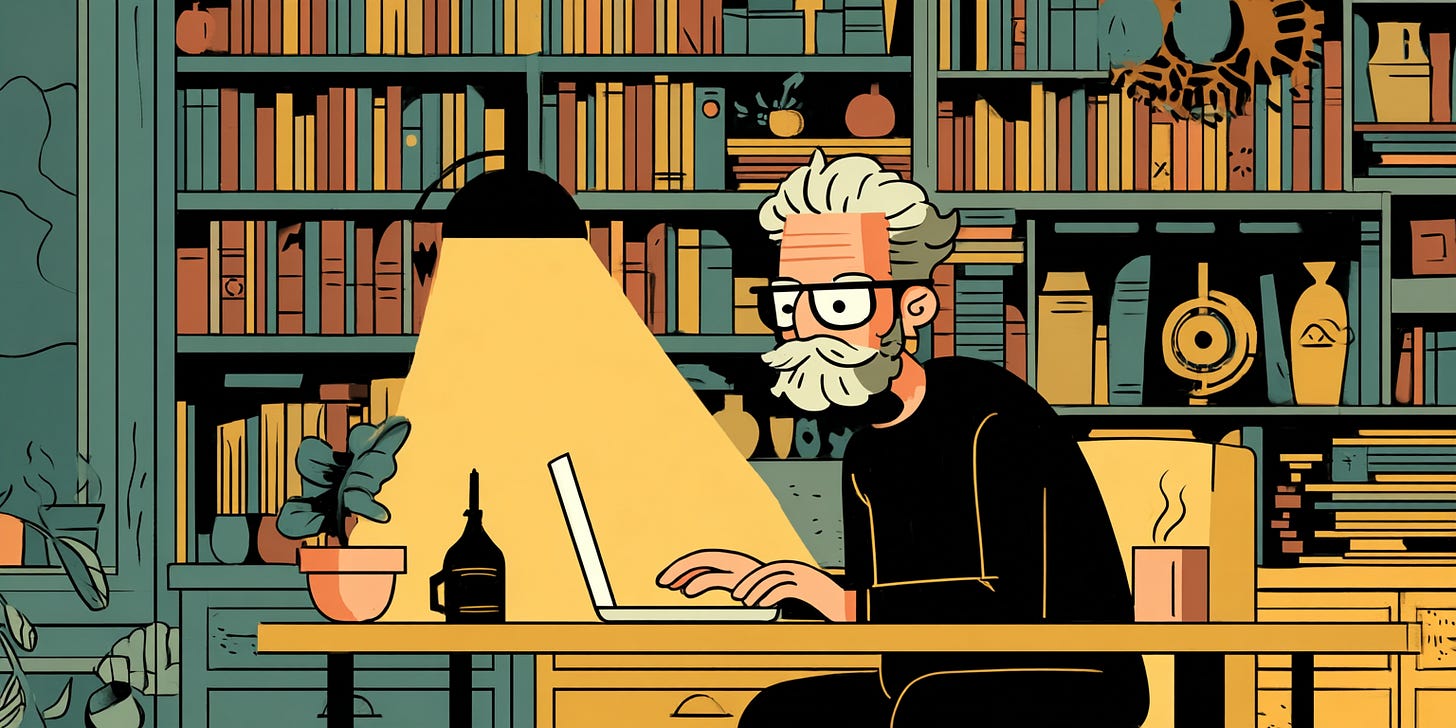22 sentences that make you a top 1% newsletter writer
Can a newsletter bring you more freedom?
I’ve been telling people to start their own email newsletter for years.
It’s still the number one way to make money and build freedom on the Internet.
I’ve written and published over a thousand newsletters over the years, and they’ve helped me avoid a boss for fifteen years.
I like them to do well, so I’m always looking at how they do and figuring out how to improve them.
Here are some cheeky nuggets to transform your newsletters:
Write for one specific person you can picture in your mind, not a faceless ‘audience.’
Don’t worry about finding your voice; just enjoy yourself when you write, and your voice will emerge naturally.
Every email you write should solve one specific problem and leave the reader with something they can apply to their lives immediately.
Stick to one clear idea per newsletter, because readers struggle to hold multiple concepts in their heads.
It’s best to build a few thousand social media followers before starting an email newsletter, but you can begin at any time, and it’s okay to start with a tiny audience at first.
Most newsletter writers fail because they try to sound professional instead of just letting go and writing about stuff that interests them.
Telling stories, especially recent ones, is the best way to engage a reader at the start of an email.
If you’re not getting lots of replies to your newsletters, you’re probably not taking enough risks.
Your email subject line is less important than a social media article title because your email newsletter ideally contains people who trust you and like you more, and will tend to open regardless of how you hook them.
A good way to think of your newsletter is that it provides little snapshots of your ongoing life story so you grab attention, develop trust and sell to those who want to pay for the help you provide.
You need to be okay with losing subscribers every time you publish, as it’s part of the process and the best newsletters are polarising.
The best newsletters feel like getting a text from your most clever, (often) funniest friend who happens to know something you’d benefit from learning.
If you can’t explain your main point to a distracted person in one sentence, your newsletter is too complicated.
People often subscribe to newsletters to solve a problem, but stay because they are continually entertained.
Write like you’re having a conversation with someone you like, not delivering a lecture to a university auditorium full of strangers.
You can make good money selling products or services with a call to action at the end of an email that follows on appropriately from the main message.
Your newsletter is a relationship-building machine that happens to occasionally sell things because you believe in those products.
Your personal stories matter more than your expert advice, because stories make people care, and advice just gives them more information to juggle.
Most newsletter writers are hesitant to express their opinions, which is precisely why having strong opinions makes you stand out and build a loyal brand.
I’ve written some of my best email newsletters when I wanted to do anything else but write that morning.
Unsubscribes happen when unsuitable people tidy up your list for you.
Most people will never start a newsletter because they’re waiting for permission that will never come.
Just start writing to one person, use it as a way to develop your confidence as a writer, and publish consistently.
Alex
Need help writing newsletters that engage 10x more people?
Look, most writers will keep churning out scattered pieces nobody shares because they refuse to learn the 16 secrets of writing that actually connects.
Online Writing Alchemy gives you my exact framework for turning experiences into content that reaches millions through authentic writing that makes people want to follow you.
Stop wondering why your brilliant ideas fall flat and learn how to make people actually care about what you say.
Learn more about the course here.
Alex
Oh, and join us at Mastery Den as a paying subscriber to access all my locked articles for the price of a ploughman’s lunch:




I've spent the last year and a half learning how to be the best storyteller I can, so this hits...Telling stories, especially recent ones, is the best way to engage a reader at the start of an email. We tend to forget that trust and authenticity go hand in hand, which comes out in every story you tell.
The paradox is that newsletters aren’t about writing at all.
They are about practicing clarity until it becomes trust, and trust until it becomes freedom.